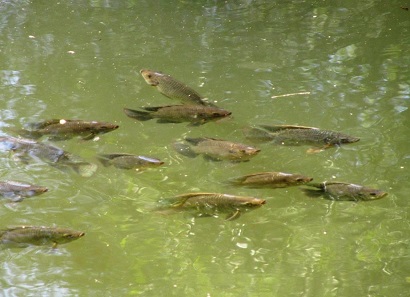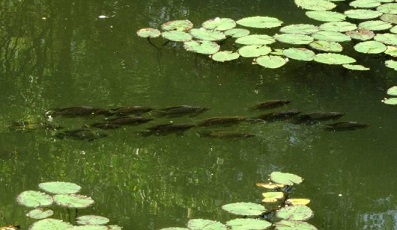MCCG Chairman Jim Pope took these photos of fish at the ‘swimming hole’ in the part of Moggill Creek that flows through parklands adjacent to Creekside Street, Kenmore Hills.
The fish are Tilapia, Oreochromis mossambica.
This is an introduced species, declared as noxious under the Fisheries Act. Unfortunately they are now known to be present in most streams in southeast Queensland. The local strain of tilapia is actually a hybrid mix of several tilapia species, but for fishery purposes they are regarded simply as O. mossambica.
Tilapia grow to 40cm in length, but are most common at about 25cm. There is considerable colour variation between males, females and juveniles. They will breed up to enormous concentrations, especially in dams and lagoons, often to the detriment of native fishes. The males develop bright red fin markings when in breeding condition and build nests for spawning in spring and summer.
As a noxious species, it is illegal to keep, exchange, sell, or return Tilapia to the wild. There are heavy penalties for non-compliance and it is recommended that if any are caught that they should be humanely killed and disposed of.
On a camping safari to East Africa, Jim ate Tilapia that had been caught in Lake Victoria and can vouch that they are very good eating!
Many thanks to Jeff Johnson from the Queensland Museum for confirming the identification and providing much of the above information. More information is available on this Department of Agriculture and Fisheries webpage.



